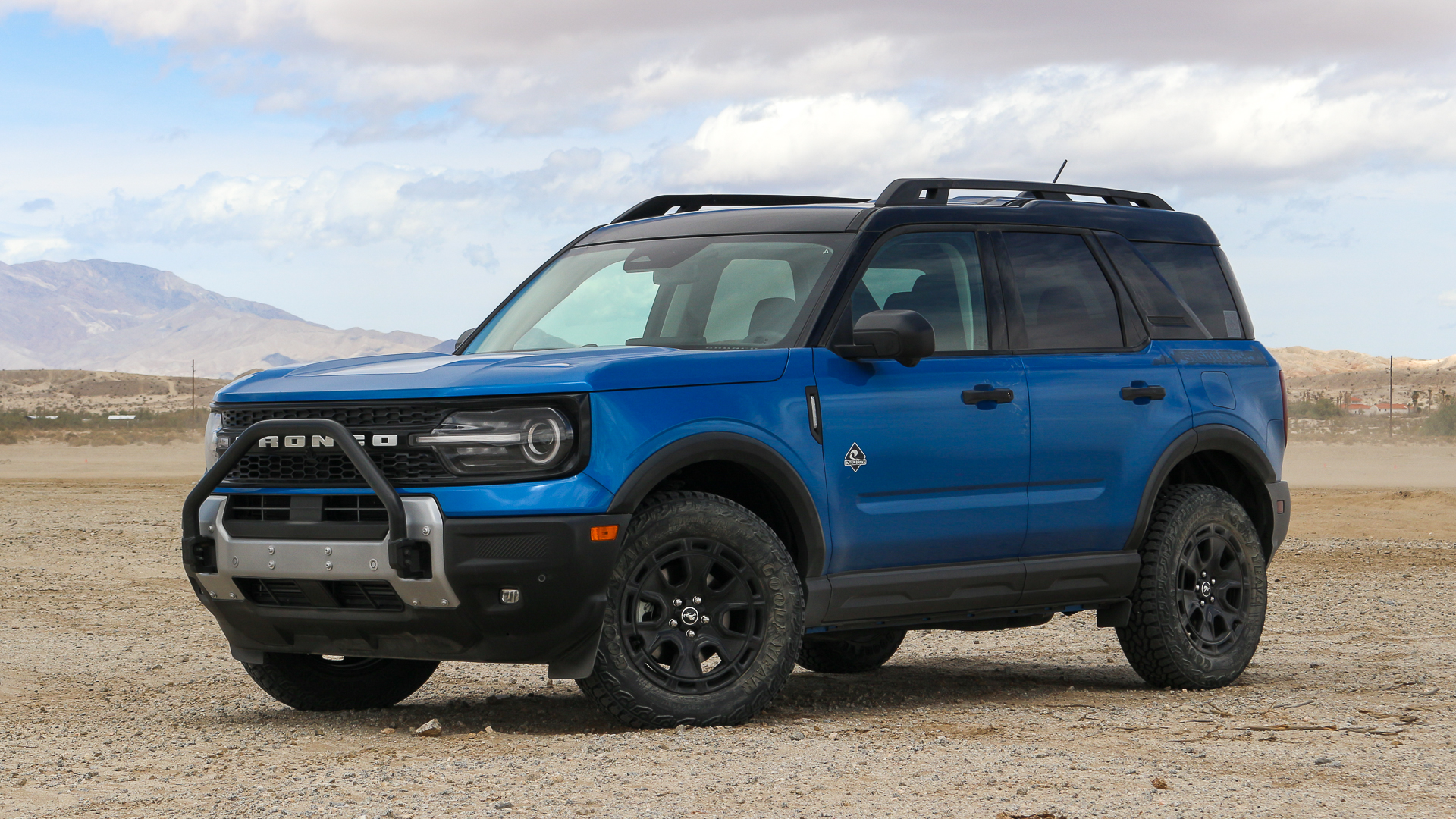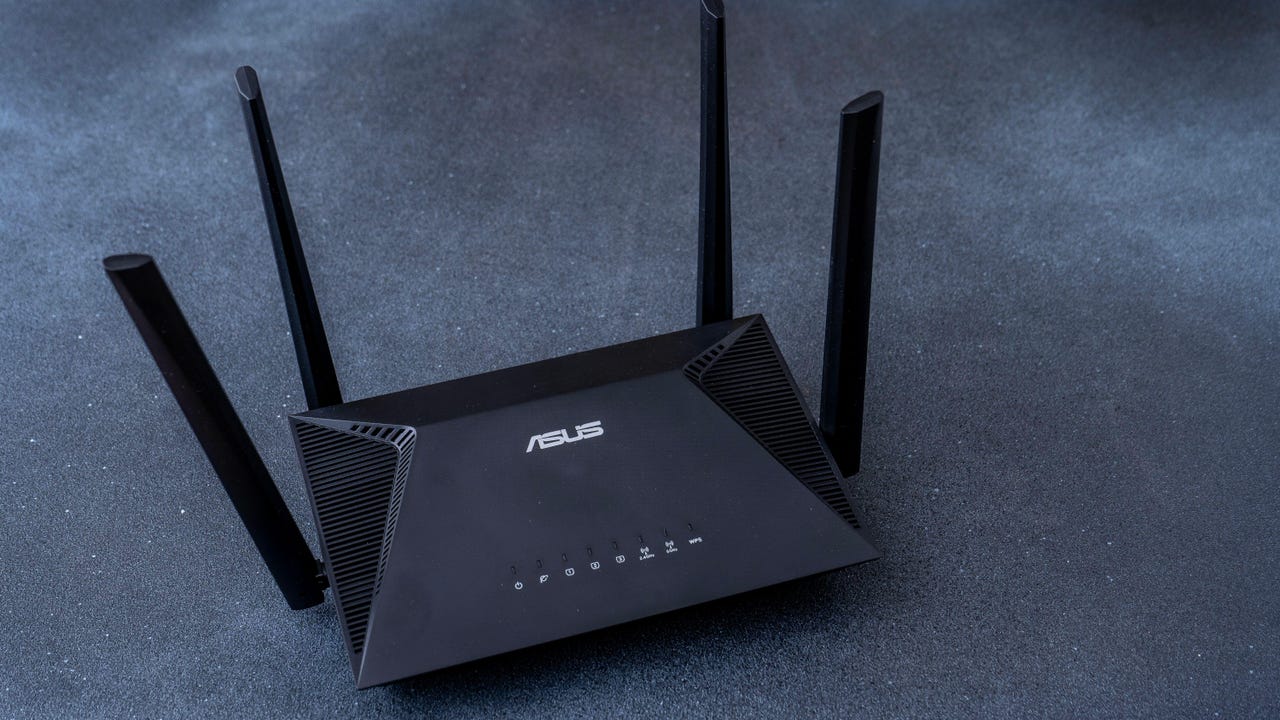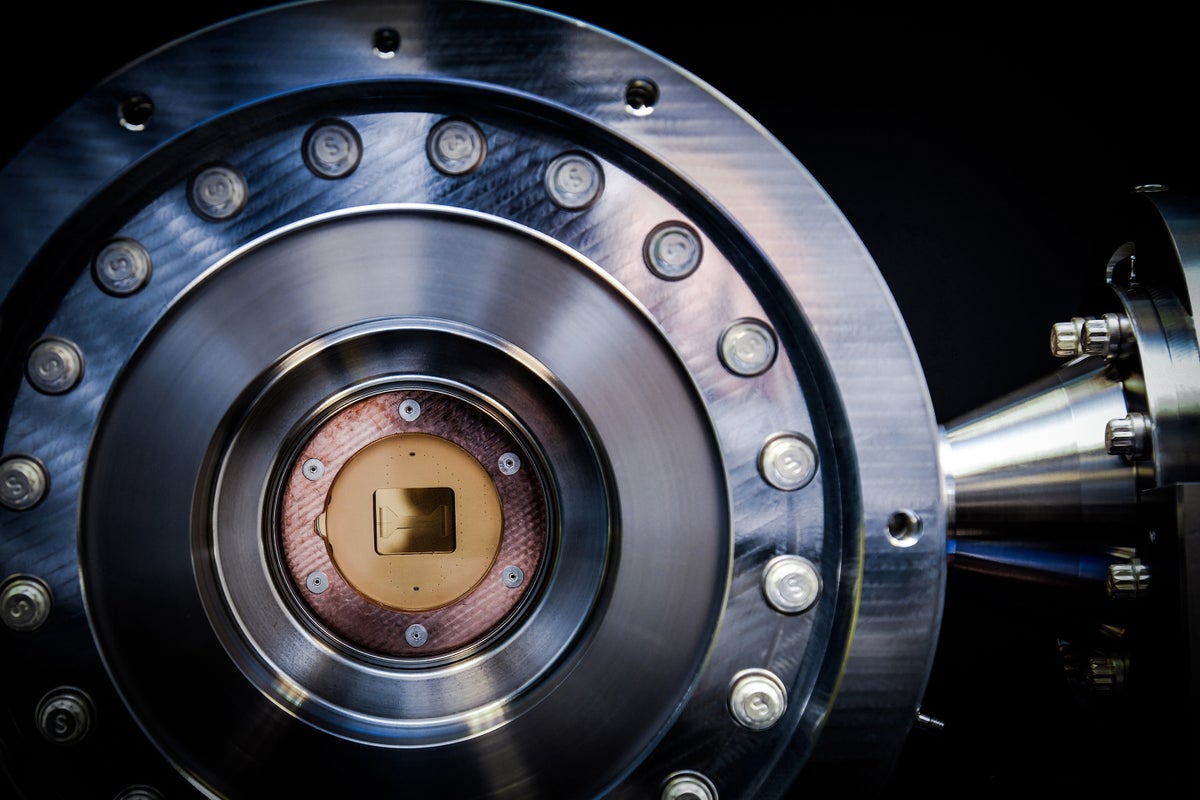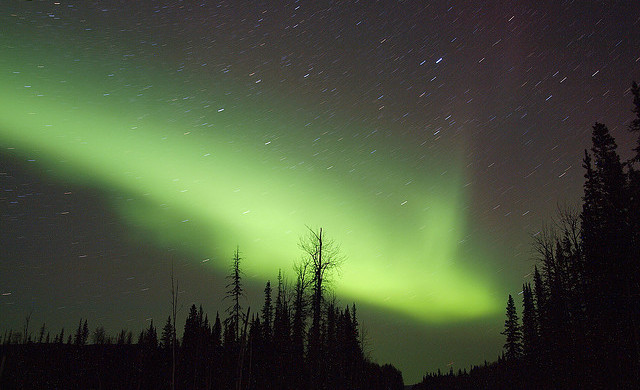2025 Ford Bronco Sport First Drive Review: Baby Sasquatch, Big Footprint
Despite its Focus bones, the Bronco Sport is alarmingly convincing as an off-roader. The post 2025 Ford Bronco Sport First Drive Review: Baby Sasquatch, Big Footprint appeared first on The Drive.

Back when it first launched, we called the Bronco Sport the “best Subaru Forester fighter yet.” For 2025, Ford doubled down on everything that makes the little utility competent off-road. There’s an enhanced version of its twin-clutch, torque-vectoring rear differential, a new G.O.A.T. Mode option, and some beefed-up body protection for more peace of mind while utilizing the other two. And what does Ford call this magical new four-wheeling bundle? Why, Sasquatch, of course.
There’s more to the 2025 Ford Bronco Sport, including an updated interior and revised powertrain, but all of that is secondary to the baby Bigfoot. Does it come at the expense of the everyday comforts that most people expect from a compact crossover? I took a little trip to San Diego last month to see for myself.
Two Flavors, One Mission
Fundamentally, not much has changed under the hood of the refreshed Bronco Sport. Both the 1.5- and 2.0-liter engines essentially carry over, albeit with the introduction of some new compliance equipment. Andrew Collins wrote about the updates in depth when the trucklet debuted last fall, but the gist is that CARB states get a lower peak output from both engines. Elsewhere, you get 250 horsepower and 280 lb-ft of torque from the 2.0, and 180 horses/200 lb-ft from the 1.5. Both technically got a bump in torque but nothing to write home about.

We could get way more granular with the Bronco Sport’s permutations, but it really boils down to how much engine you want, and how much capability you’d like to pair it with. For our purposes, everything else is essentially window dressing. Let’s start with the big news: Sasquatch.
The Bigfoot branding debuted back in 2020 as Ford’s take on Jeep’s no-holds-barred Rubicon trim, only Ford decided to make it a package rather than bake it into the top-trim Bronco Badlands. This not only gave customers who wanted the aesthetics of the Badlands but didn’t need the 4×4 bits the ability to opt out, but it also gave Ford more flexibility in offering the package elsewhere in its lineup. With the benefit of hindsight, Jeep might have done the same. And now, Ford is looking to harvest a bit of what it sowed five years ago.
If you’re expecting the Bronco Sport’s Sasquatch package to be watered down relative to its bigger sibling’s, you might be surprised. Not only does it inherit the twin-clutch setup that was already available on the Bronco Sport Badlands, but Ford managed to work a rear locker into the package too. You also get 29-inch Goodyear Territory ATs in 295/65R17, unique Bilstein shocks, nearly two-thirds of an inch more suspension travel than you get on the standard Badlands, a 360-degree camera system, and a whole bunch of honest-to-goodness metal body protection, including both the front and rear bumper inserts. As an added bonus, all of those metal bits are bolted on for easy replacement (or upgrade). That includes the little push bar up front.


For 2025, Ford is offering the Sasquatch package on both the 1.5-liter Outer Banks and the 2.0-liter Badlands trims. But if you don’t need that much capability (or perhaps you simply like the look), you can opt for the less-rugged Black Diamond off-road package. You still get the Sasquatch’s extra recovery points, some beefier underbody protection (albeit without the prominent front and rear steel plates) and a wheel and tire upgrade. Opting for this one pigeonholes you into the Big Bend trim.
I’m among those who believe the term “crossover” is dated and useless, and here the Bronco Sport is making my case for me. For something that is still nominally “car-based,” at least on paper, this is one seriously capable little utility. All that’s missing is a true low-range gearbox, but after I spent some time on the trails, I found myself feeling a bit Peter Gibbons about the whole thing.
I Wouldn’t Say I’ve Been Missing It, Bob
After ample seat time in both the Badlands and Black Diamond with both engines, here’s where we stand. Point blank, if you’re used driving something like a Subaru Forester, you’ll feel right at home in the Black Diamond. From the slight increase in road noise to the imitation pan flute symphony occasionally performed by the chunky roof rack, the Bronco Sport’s accentuated ruggedness comes through in most of the ways you’d expect. It’s nowhere close to the cacophony of a drop-top Bronco, mind you, but there’s enough outside noise to remind you that you’re not actually driving an Escape, no matter what Wikipedia says.

But whatever the badge may be, the Bronco Sport is indeed based on Ford’s global small-car platform, which underpins not only the aforementioned Escape, but also a solid half-dozen other models sold worldwide, from the Maverick pickup to the Focus hatchback that’s no longer offered here in America. Even the twin-clutch rear differential is an evolution of the trick rear end that Ford put in the Focus RS a decade ago. This DNA shines through on the road, even even if it is dimmed a bit by the knobby tires and high-top seating position. But after driving the Bronco Sport back-to-back with the new Maverick Lobo, the family resemblance is downright uncanny.
The Bronco Sport doesn’t need to be settled down before tight switchbacks, nor does it need to be overdriven to feel lively. In fact, if you try to throw it into a corner too hard, you just might miss. The feedback from the wheel might as well be coming directly from 2015, and despite the long-travel suspension and balloon-like tires, the Bronco Sport tucks in flat and responds obediently to corrections. There’s a reason the Mazda 3, Volvo C30 and S40 and yes, even the Escape have been praised for their ride composure over the years. This chassis has been first-rate since it first started kicking the twist-beam VW Golf’s ass around Europe back in the late 1990s; 30 years of development have only made it better.
The 1.5-liter’s 180-horse team looks a bit anemic when yoked to the 3,750-pound Outer Banks, and if you somehow manage to catch it out of boost (difficult, but doable), it can feel it, but the three-cylinder’s torque keeps it from feeling like a complete dog. This is the same little engine that made the 2,700-pound Fiesta ST feel like a rocket ship. Here, it gets the job done, but it’s not particularly thrilling. The 100-pound weight penalty imposed by the 2.0-liter four is well worth it for the extra 70 hp and 77 lb-ft.


What does all of that have to do with the Bronco Sport’s lack of a low-range transfer case? Not much, except to say this: After driving Bronco Sports all over southern California for the better part of 12 hours, I was ready to wake up and do it all over again. That’s not the sort of spryness one normally expects after a day of being beat up by a solid-axle 4×4. Score one for four-wheel independent suspension. If the Bronco Sport had no off-road predilections, we could end the review right here.
Naw. Let’s get dirty.
To allow both the Black Diamond and Sasquatch the opportunity to strut their stuff, Ford scouted out separate routes. We started the day in a Black Diamond, which Ford had us snake through unimproved trails in California’s Anza-Borrego Desert State Park. The trail was mostly washouts and the occasional boulder field, and while the Black Diamond could have managed most of it with the driver’s eyes closed, there were occasional pinch points and obstacles that required concentration—and made for excellent photo ops. The Bronco Sport’s various nannies put up no fuss as it alternatively pawed at the air and hiked a rear leg over some of the more dramatic obstacles. Not bad for a Focus. Not bad at all.

Ford’s on-site engineers led the way as we wound through Borrego Mountain Wash without complication. Whenever we’d cross a busier road or pass through a trailhead parking lot, they’d point out the various Subarus that had parked and gone no further. Shots fired.
After a lunch break, it was time to head back out in the ‘squatch. We fully expected to take a tougher route in the Badlands, but we soon found ourselves headed to a different destination altogether, not inside the park, but in the neighboring Ocotillo Wells State Vehicular Recreation Area—one of California’s, numerous open spaces where you can do pretty much anything so long as you bring along some common sense. And maybe a few bottles of water.
Here, Ford set us loose on the dunes to try out one of the Sasquatch’s truly new features—Rally Mode. This G.O.A.T. Mode setting allows you to drive the Bronco Sport with its tail allllll the way out. While wildly impractical for daily driving, this gives you opportunities aplenty for rooster-tail shenanigans, and we were more than happy to partake.

Once the dunes receded, however, we saw our ultimate goal: climbing some rocks. G.O.A.T. isn’t just a cute acronym chosen to appeal to the hyperbole generation; it does actually stand for something: Goes Over Any Terrain. And we were about to go over some stuff. Big stuff. Pointy stuff.
Much has been made about the differences between AWD and 4WD over the years, but if you set aside the arguments about what constitutes a “real” truck or SUV and just look at it from a functional perspective, what really matters nine times out of 10 is your crawl speed. Put simply, a low-range gearbox lets you move more slowly without using the brakes. This is key for technical rock-crawling, where excess speed is the enemy.
In the baby Bronco, we have no such mechanical arrangement. Instead, the advanced throttle and braking systems do their best to simulate it, with genuinely impressive results. For the next hour, we climbed and descended boulder-covered washouts like they were mere farm roads, grinding and squealing the Sasquatch’s skid plates everywhere we went, but never once getting hung up.

As impressive as the Bronco Sport is both on-road and off, it does have some shortcomings. The interior, while adequate, is not particularly exciting. The new Sync 4 infotainment system comes with a sleek and responsive new display, but it now incorporates the HVAC, meaning you no longer get physical fan or temperature controls. Lame.
The Early Verdict
This. Thing. Is. Overkill.
You know how just about every new SUV review you read includes some sort of commentary about how the vast majority of the driving public doesn’t really need anything more robust than a front-wheel-drive wagon or something? The Bronco Sport Sasquatch is the distilled essence of that argument. It encroaches so egregiously on the boundary of “real SUV” territory that if I were one of the company’s product planners, I’d have serious concerns about its current “Big Bronco” customers backsliding into the cheaper Sport when it comes time for a replacement. A sale’s a sale, I suppose.


That said, the Bronco Sport is cheaper, but it ain’t cheap. Not that long ago, our eyes watered at the prospect of an Escape that crept into the low-$40,000 space with options. The Bronco Sport Badlands, meanwhile, starts at $41,710, and that’s before you ‘squatch up. If you start throwing accessories at it, you can push the Badlands right up to the $50K mark—a more than 60% jump from the Bronco Sport’s base price. That’s a lot of scratch for what amounts to a super butch Ford Focus. And given the current economic climate, I’d be remiss if I didn’t mention that Ford builds this in Mexico.
But as silly as a Bronco Sport Sasquatch may seem, Ford deserves credit for delivering something that is as long on substance as it is on sizzle. Sure, nobody needs one of these… but I kind of want one.

| 2025 Ford Bronco Sport Specs | Outer Banks | Badlands with Sasquatch Package |
|---|---|---|
| Base Price (as tested) | $36,890 ($42,220) | $41,710 ($45,695) |
| Powertrain | 1.5-liter turbo-three | 8-speed automatic | all-wheel drive | 2.0-liter turbo-four | 8-speed automatic | all-wheel drive |
| Horsepower | 180 | 250 |
| Torque | 200 lb-ft | 280 lb-ft |
| Seating Capacity | 5 | << |
| Cargo Volume | 29.4 cubic feet | 29.1 cubic feet |
| Curb Weight | 3,729 pounds | 3,849 pounds |
| Max Towing | 2,200 pounds | 2,700 pounds |
| Ground Clearance | 8.8 inches | 8.7 inches |
| Off-Road Angles | 24.1° approach | 21.0° breakover | 27.3° departure | 31.2° approach | 21.7° breakover | 27.9° departure |
| EPA Fuel Economy | 25 mpg city | 30 highway | 27 combined | 21 mpg city | 27 highway | 23 combined |
| Score | 9/10 |

Quick Take
Nobody was asking for a compact crossover with a locking rear differential. But now that we have one, we love it.













Got tips? Send ’em to tips@thedrive.com
The post 2025 Ford Bronco Sport First Drive Review: Baby Sasquatch, Big Footprint appeared first on The Drive.


















_Tanapong_Sungkaew_via_Alamy.jpg?width=1280&auto=webp&quality=80&disable=upscale#)
















































